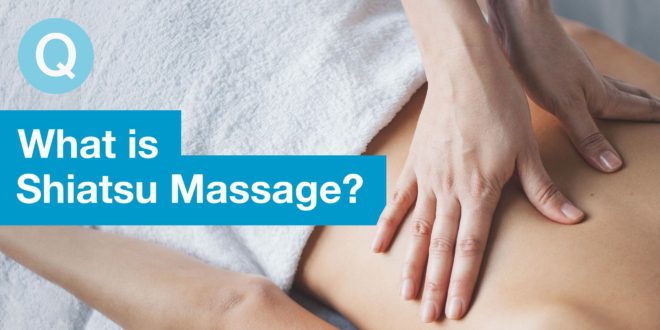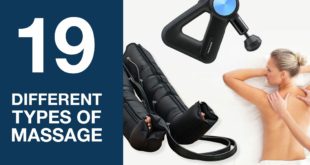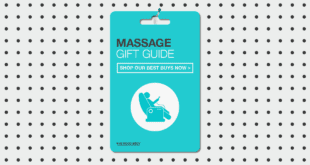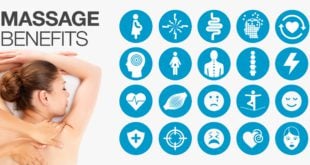In this article we’ll explore more about the history, how it differs to other forms, the wide range of benefits and answer a few frequently asked questions.
Key Takeaways
- Shiatsu massage involves pressure being applied to various areas of your body by a therapist using their fingers, palms, elbows, knuckles and feet.
- No oils are used, you’re fully clothed and lay on a mat on the floor.
- Benefits include improved circulation and relief from the symptoms of stress, depression and anxiety.
- It is seen as an inherently safe treatment.
What is Shiatsu Massage?
Originating from Japan, shiatsu translates to ‘finger pressure’. When performing this type of massage, a therapist may also apply force with their knuckles, elbows, feet and knees.
It can loosen up your muscles, stimulate circulation of the blood and get your energy flowing.
In fact the idea of energy flow, also known as ‘Ki’ or ‘Qi’ (pronounced ‘chee’) is the main principle of shiatsu.
Practitioners believe that disruption to your energy flow could cause illness or disease.
Shiatsu is about freeing any blockages or imbalances and rejuvenating the body by restoring energy to where it’s most needed.
The practice involves applying pressure to, or stretching any points, that lie along the lines of energy, these are referred to as ‘meridian channels’.
Watch the short video below that explains a little more about the technique in less than two minutes:

How is Shiatsu Different to Other Massage Techniques?
There are five main differences to note compared to other techniques, such as hot stone and percussion massage:
- You’ll keep your clothes on unlike other massage styles where you may have to remove your clothes.Tip: Remember to attend your session in loose, comfortable clothes.
- The practitioner will ask you to lay on the floor on a mat, as opposed to a table. This is to allow them to apply pressure and manipulate your body more easily.
- The focus will be on your joints and connective tissue rather than your muscles.
- No oils are used, unlike Swedish massage for example where you inhale the aromas and they are absorbed into your skin.
- You’ll come out feeling energized and rejuvenated, as opposed to relaxed and sleepy.
The closest form of treatment to shiatsu is acupuncture as it draws on traditional Chinese medicine theory and uses meridians and pressure points.
However, unlike acupuncture there are no needles used.
Benefits of Shiatsu Massage
There are so many ways that both your body and mind can benefit from shiatsu massage. Below we’ve summarised just a few of them!
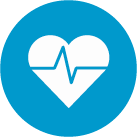
1: Improves Your Circulation and Reduces Constipation
Practitioners believe shiatsu stimulates the whole body’s circulation, with research showing it can be particularly beneficial for your digestive system.[1]
Laxatives are generally the most common strategy for dealing with constipation, however they can sometimes have unpleasant side effects.

2: Reduces Stress and Anxiety
A scientific study, initially published by the Swiss Association of Shiatsu, suggested that the technique promotes emotional and physical calm and reduces tension in the body.[2]
Stress and anxiety go hand-in-hand, when stress is prolonged, anxiety can result. Shiatsu can help here, too.
Researchers looking at the impact on those with anxiety, found it had a relaxation effect, relieving anxious thoughts.[3]
Another small study involving 60 burn patients admitted to a hospital in Iran revealed that shiatsu may increase levels of serotonin (a hormone that helps you to feel calmer and more focused).[4]
Not just that but it also increases dopamine (another hormone that makes feel more motivated, accomplished and productive), helping to reduce anxiety.

3: Decreases Depressive Symptoms
In a pilot study assessing therapies for depression in patients with Alzheimer’s disease, findings suggested that shiatsu may play a role in promoting psychological wellbeing.[5]
Further investigations are recommended to provide stronger evidence before it’s used as a cost-effective way of helping to treat depression.

4: Helps with Sleep
Findings published in 2014 demonstrated the positive effect of hand self-shiatsu (HSS) for people with chronic pain that negatively impacts on their slumber.[6]
Not only did it improve the time it takes to fall asleep, it also enhanced sleep duration.
Another piece of research from the University of Alberta revealed young adult athletes recovering from concussion can enjoy better sleep with HSS.[7]
Want to give it a go yourself?
Watch Leisa Bellmore, Shiatsu Therapist in the Artists’ Health Centre at Toronto Western Hospital, demonstrate how to perform self-shiatsu on the hand to help with sleep:

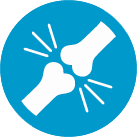
5: Helps Bring Relief to Arthritis Sufferers
A review article published in the RGUHS Journal of Nursing Sciences, concluded that shiatsu massage therapy has an “immense effect in reducing the levels of pain among elderly with arthritis”.[8]
Side Effects of Shiatsu Massage
A systematic review of shiatsu massage explains that it’s an ‘inherently safe’ treatment.[9]
It’s so safe that the world’s leading independent cancer charity, Cancer Research UK, advocates for it as a complementary alternative therapy.[10]
So what can you expect to feel after a treatment?
The worst case scenario is a little muscle stiffness, headache or tiredness. These symptoms shouldn’t last longer than a few hours and even then, not everyone will experience them.
FAQs about Shiatsu Massage
What does shiatsu massage do?
What is shiatsu massage good for?
Does shiatsu massage hurt?
Is shiatsu massage safe during pregnancy?
What do you wear for a shiatsu massage?
Enjoying Shiatsu Massage at Home
Now you know everything there is to know about this style of massage, you might want to start enjoying the technique at home.
Read our guide to the best back massagers (with shiatsu options!).
References
- Tsiormpatzis, S. (2019). Effects of shiatsu on the health-related quality of life of a person with secondary progressive multiple sclerosis: A mixed methods N-of-1 trial within a whole systems research case study Author links open overlay panel [Online]. European Journal of Integrative Medicine. Available from: https://www.sciencedirect.com/science/article/abs/pii/S1876382019308777 [Accessed 10 August 2023]. ↩
- Shiatsu Research Network (2023). Scientific Study Suggests: Shiatsu Helps with Stress [Online]. Available from: https://shiatsu-research-network.org/j39/index.php/blog/34-scientific-study-suggests-shiatsu-helps-with-stress [Accessed 10 August 2023]. ↩
- Iida, M. et al (2000). Effects of Shiatsu Massage on Relief of Anxiety and Side Effect Symptoms of Patients Receiving Cancer Chemotherapy [Online]. The Kitakanto Medical Journal. Available from: https://www.jstage.jst.go.jp/article/kmj1997/50/3/50_3_227/_pdf [Accessed 10 August 2023]. ↩
- Mohaddes Ardabili, F. et al (2015). The effect of shiatsu massage on underlying anxiety in burn patients [Online]. World journal of plastic surgery. Available from: https://www.ncbi.nlm.nih.gov/pmc/articles/PMC4298863/ [Accessed 10 August 2023]. ↩
- Lanza, G. et al (2019). Comment on “Shiatsu as an Adjuvant Therapy for Depression in Patients With Alzheimer’s Disease: A Pilot Study” [Online]. Journal of Evidence-Based Integrative Medicine. Available from: https://www.ncbi.nlm.nih.gov/pmc/articles/PMC6351716/ [Accessed 10 August 2023]. ↩
- Brown, C.A. et al (2014). Hand self-Shiatsu for sleep problems in persons with chronic pain: a pilot study [Online]. Journal of Integrative Medicine. Available from: https://pubmed.ncbi.nlm.nih.gov/24666675/ [Accessed 10 August 2023]. ↩
- Betkowski, B. (2019). Shiatsu massage can help induce sleep for people who suffer a concussion, study shows [Online]. Folio | University of Alberta. Available from: https://www.ualberta.ca/folio/2019/04/shiatsu-massage-can-help-induce-sleep-for-people-who-suffer-a-concussion-study-shows.html [Accessed 10 August 2023]. ↩
- Deb, T., Venkatesan, B. and Kamei, S. (2021). Effectiveness of Shiatsu on Pain Among Elderly with Arthritis Staying in Old Age Homes: A Randomized Clinical Trail [Online]. RGUHS Journal of Nursing Sciences. Available from: https://journalgrid.com/view/article/rjns/432 [Accessed 10 August 2023]. ↩
- Robinson, N., Lorenc, A. and Liao, X. (2011). The evidence for Shiatsu: a systematic review of Shiatsu and acupressure [Online]. BMC Complementary and Alternative Medicine. Available from: https://www.ncbi.nlm.nih.gov/pmc/articles/PMC3200172/ [Accessed 10 August 2023]. ↩
- Cancer Research UK (2023). Shiatsu and cancer [Online]. Available from: https://www.cancerresearchuk.org/about-cancer/cancer-in-general/treatment/complementary-alternative-therapies/individual-therapies/shiatsu [Accessed 10 August 2023]. ↩
- American Pregnancy Association (2023). Prenatal Massage Therapy [Online]. Available from: https://americanpregnancy.org/healthy-pregnancy/is-it-safe/prenatal-massage/ [Accessed 10 August 2023]. ↩
